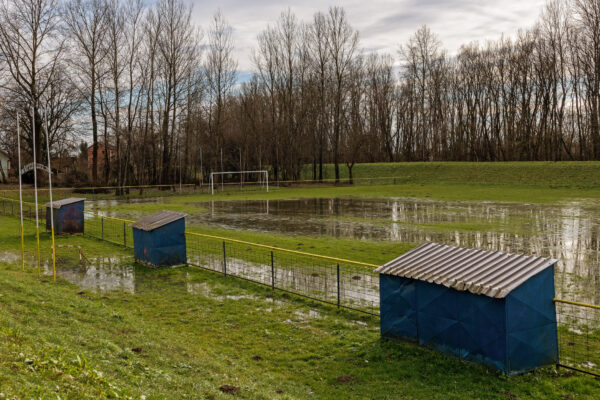
The future of ownership in women’s football: a look at the changing landscape
30 December 2024

Following the insightful “Safeguarding in Women’s Football Panel” at HCR’s Spanish Football Business Conference, attention turns to a topic that emerged during the discussion: the future of ownership in women’s football.
Nicole Allison’s vision for independent ownership
Nicole Allison, CEO of Worcester City Women’s Football Club, advocates for an independent ownership model. Her belief is that this structure will be key to driving women’s football forward. In England’s top tier, Women’s Super League (“WSL”), all twelve clubs are directly connected to their male counterparts. This is also the case for the majority of clubs in the second tier, the Women’s Championship, with only two exceptions.
In contrast, the National Women’s Soccer League (“NWSL”) in the United States is witnessing considerable success with a more independent ownership model. Out of 14 clubs in the NWSL, eight are standalone entities, including clubs like Angel City FC, whose ownership includes notable investors such as actor Natalie Portman.
This model has led to significant investment, with firms like Carlyle Group recently investing $58m into Seattle Reign FC. The NWSL’s ability to cater to a unique audience, tailoring marketing strategies and partnerships to their fanbase, has proven effective – illustrated by the documentary “Angel City” on HBO, which showcases the power of a standalone model.
The shift towards independence in England
In England, the recent structural changes in women’s football signal a potential shift toward greater independence. The Women’s Professional Leagues Limited (“WPLL”) now governs the WSL and Women’s Championship, having taken over from the FA for the 2024/2025 season. Led by CEO Nicki Doucet, a former director at Nike, the WPLL is focused on capitalising on the rapid growth of women’s football by increasing commercial opportunities, attracting investment, and driving revenues for the leagues.
Georgia Adderley, Managing Director of Add Management and FIFA Licensed Sports Agent, who was also a panellist at HCR’s Spanish Business Football Conference, spoke about the opportunities that follow with a more independent ownership model:
“There is an opportunity in the women’s game to do things slightly differently to the men’s. We are seeing this a lot in the UK, for example Arsenal have partnered with ILL Makaige, which is a foundation brand and that was quite big news, and they have done a lot of campaigns with them.
“It is doing things a little bit differently and thinking outside of the box. I do think if you look at audiences, in men’s and women’s football, these are often quite different – and we don’t need to replicate the men’s game, so I think we should use these opportunities with different audiences that are actually there. What you’ll find is a lot of fans at women’s games, we might be smaller in number but we are actually a lot more engaged.”
Both Nicole Allison and Nicki Doucet have stressed that women’s football has a commercial appeal, community focus and fanbase that is unique – and should not be viewed as a scaled-down version of men’s football. Research suggests that audiences of women’s games are more progressive, inclusive and family-oriented, providing opportunities for a targeted marketing approach that is distinct from the men’s game. Therefore, creating a system that caters specifically to the unique characteristics of the women’s game is crucial for its future growth.
Michele Kang’s multi-club ownership
Michele Kang, an American businesswomen and owner of Kynisca Sports International, advocates strongly for multi-club ownership in women’s football. Michele Kang is an owner of Washington Spirit in the NSWL, London City Lionesses in the Women’s Championship and Olympique Lyonnais Feminine in the French Première Ligue. Kang argues that due to the lack of financial backing in the women’s game, multi-club ownership is necessary for growth.
Multi-club ownership allows clubs to benefit from the ability to review data deriving from tailored business strategies and resource allocation across a portfolio. This allows owners to track the market and capitalise on synergies to improve the professionalism, opportunities for growth and quality of training and resources. These improvements will develop players to provide better performances, attract bigger crowds and generate higher revenues.
This approach, although controversial, supports the idea that pooling together the resources of multiple clubs provides a streamlined, strategic approach for all clubs and, given the limited revenue stream of women’s clubs at present, allows investors to spread risk across the portfolio.
Multi-club ownership relies on heavy initial investment, as Kang has demonstrated, but hopes to capitalise on the unique opportunities for sponsorship and marketing that comes with professionalising the women’s game. However, it could be argued that this approach will only work in the short-term, as multi-club ownership has been derided in the men’s game as manipulating the system and creating an unfair advantage.
The benefits of integration with men’s clubs
While independent ownership models offer a path forward for women’s football, there are also clear benefits to clubs being integrated with their male counterparts. The 2022/2023 season data highlights the dominance of the “big four” clubs – Arsenal, Chelsea, Manchester City, and Manchester United – in the WSL, with these clubs collectively generating 66% of the £48m annual revenue in the league. Despite the significant revenue generated by the WSL, the league still operates at a loss, with a pre-tax deficit of £21m in 2022/2023, illustrating the ongoing need for financial support from men’s clubs.
However, relying on the financial support of men’s clubs comes with its drawbacks. In light of financial difficulties at Reading FC, the club decided to withdraw Reading FC Women from the Championship, seeing them relegated to the fifth tier of women’s football. There is a long way to go before women’s clubs become profitable, placing them at risk of being cut if the wider club faces financial difficulty. It might be that hybrid models or full independence is the key to protecting full-time female players losing their jobs under circumstances like this.
Looking ahead: what’s next for women’s football ownership?
As the WPLL begins to take charge of the women’s leagues in England, it will be crucial to monitor how the league develops its commercial and fan engagement strategies. Can the WPLL succeed in establishing its own audience and capitalising on the growing popularity of women’s football?
While the financial realities may make full independence from male clubs challenging in the short-term, there is certainly potential for hybrid models to emerge, where women’s clubs retain separate legal identities but operate within the broader structure of a larger male club. This could mirror the approach seen at clubs like Kang’s Olympique Lyonnais Feminine, where the women’s team is part of a larger group but operates as a distinct entity with its own branding and operations.
Ultimately, the future of ownership in women’s football will likely involve a mix of independent clubs, hybrid models, and continued integration with men’s teams. What is clear is that the women’s game is rapidly evolving, and the key to its continued growth will be finding ownership and governance structures that best support its unique needs and potential.
As we look ahead to the end of the 2024/2025 season, when the WPLL will have had its first full season in charge, the impact of these changes will become clearer. Women’s football is growing fast, and the ownership model will be a critical piece of its future success.
This article was authored by Olivia Mitcham, Trainee, Commercial Team and Milo Robertson, Paralegal, Corporate Team.










